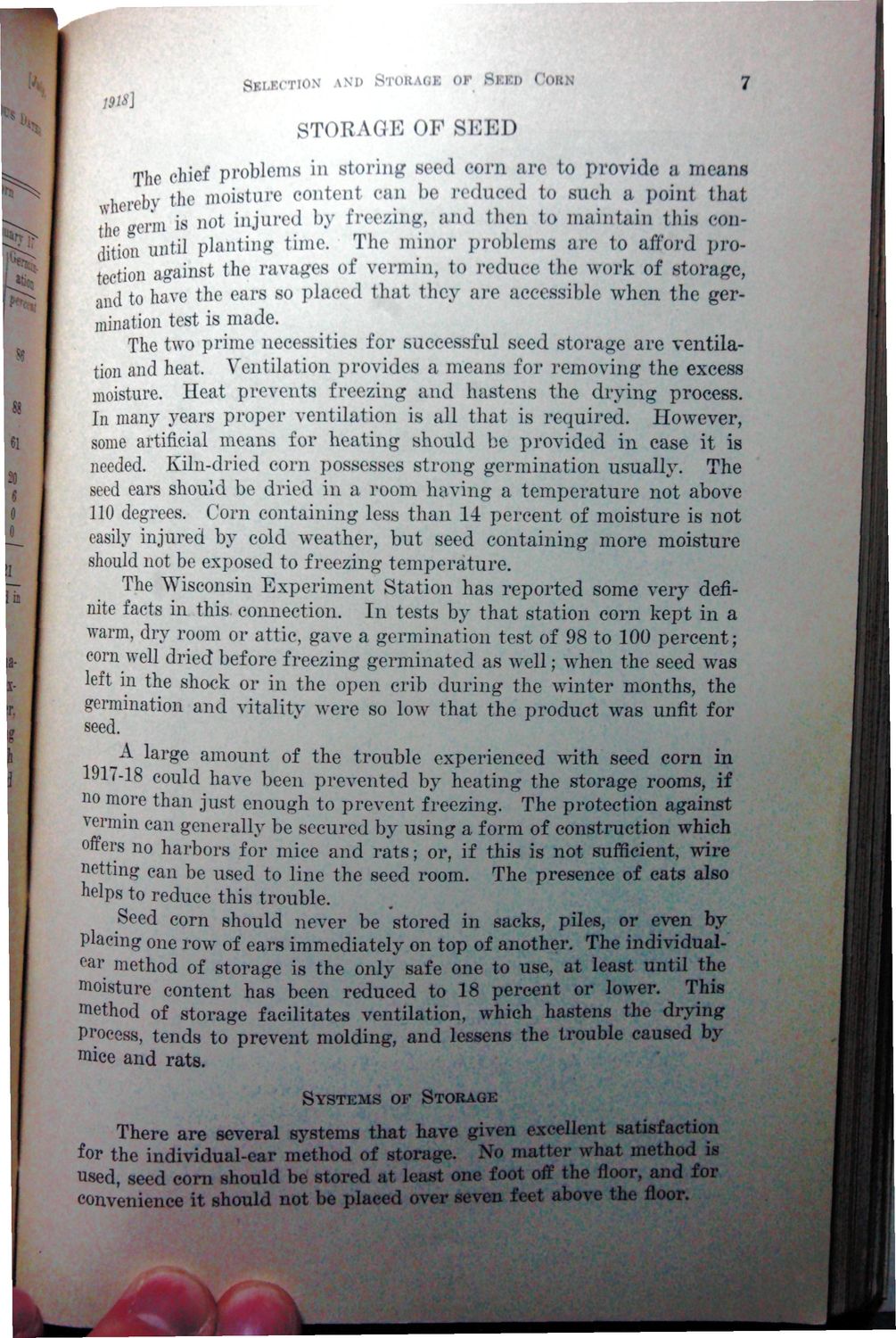| |
| |
Caption: War Publications - WWI Compilation 1923 - Article 44
This is a reduced-resolution page image for fast online browsing.

EXTRACTED TEXT FROM PAGE:
SELECTION AND STORAGE o r SEED CORN 7 191*] STORAGE OF SEI K • \ \ h 5* < * * ft 61 0 0 The chief problems in storing seed coin are to provide a means j robv the moisture content can be reduced to such a point that C 1 ti <rerm is not injured by freezing, and then to maintain this condition until planting time. The minor problems are to afford protection against the ravages of vermin, to reduce the work of storage, and to have the ears so placed that they are accessible when the germination test is made. The two prime necessities for successful seed storage are ventilation and heat. Ventilation provides a means for removing the excess moisture. Heat prevents freezing and hastens the drying process. In many years proper ventilation is all that is required. However, some artificial means for heating should be provided in case it is needed. Kiln-dried corn possesses strong germination usually. The seed ears should be dried in a room having a temperature not above 110 degrees. Corn containing less than 1-4 percent of moisture is not easily injured by cold weather, but seed containing more moisture should not be exposed to freezing temperature. The Wisconsin Experiment Station has reported some very definite facts in this, connection. In tests by that station corn kept in a warm, dry room or attic, gave a germination test of 98 to 100 percent; corn well dried before freezing germinated as well; when the seed was left in the shock or in the open crib during the winter months, the germination and vitality were so low that the product was unfit for seed. A large amount of the trouble experienced with seed corn in 1917-18 could have been prevented by heating the storage rooms, if no more than just enough to prevent freezing. The protection against vermin can generally be secured by using a form of construction which offers no harbors for mice and rats; or, if this is not sufficient, wire netting can be used to line the seed room. The presence of cats also helps to reduce this trouble. Seed corn should never be stored in sacks, piles, or even by placing one row of ears immediately on top of another. The individualear method of storage is the only safe one to use, at least until the moisture content has been reduced to 18 percent or lower. This method of storage facilitates ventilation, which hastens the drying Process, tends to prevent molding, and lessens the trouble caused by mice and rats. SYSTEMS OF STORAGE There are several systems that have given exoeitent satisfaction for the individual-ear method of storage. No matter what method is used, seed corn should be stored at least one foot off the floor, and for convenience it should not be placed over seven teet above the floor.
| |